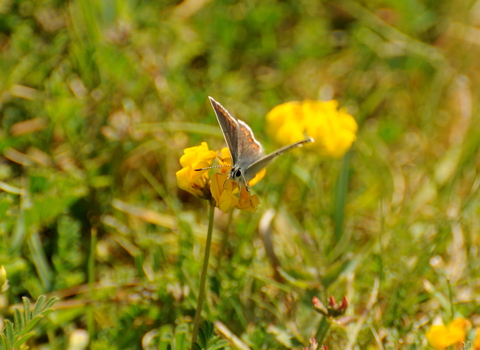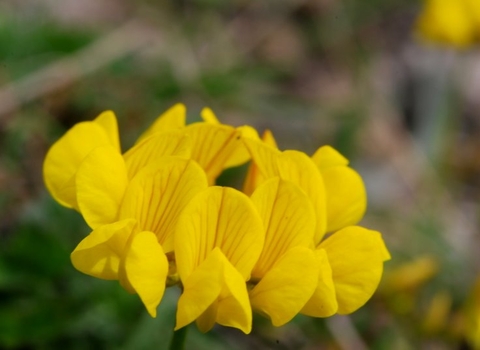
Brown Argus on Horseshoe-vetch by Brian Eversham

Horseshoe-vetch by Brian Eversham
Horseshoe vetch
Horseshoe vetch is a member of the pea family, so displays bright yellow, pea-like flowers and seed pods. Look for this low-growing plant on chalk grasslands from May to July.
